15 September 2024
Discover the Rich Heritage and Culinary Delights of Singapore’s Hainanese Community
More than 40 National University of Singapore (NUS) alumni journeyed through Singapore’s Hainanese heritage and gained a deeper appreciation for this vibrant community.
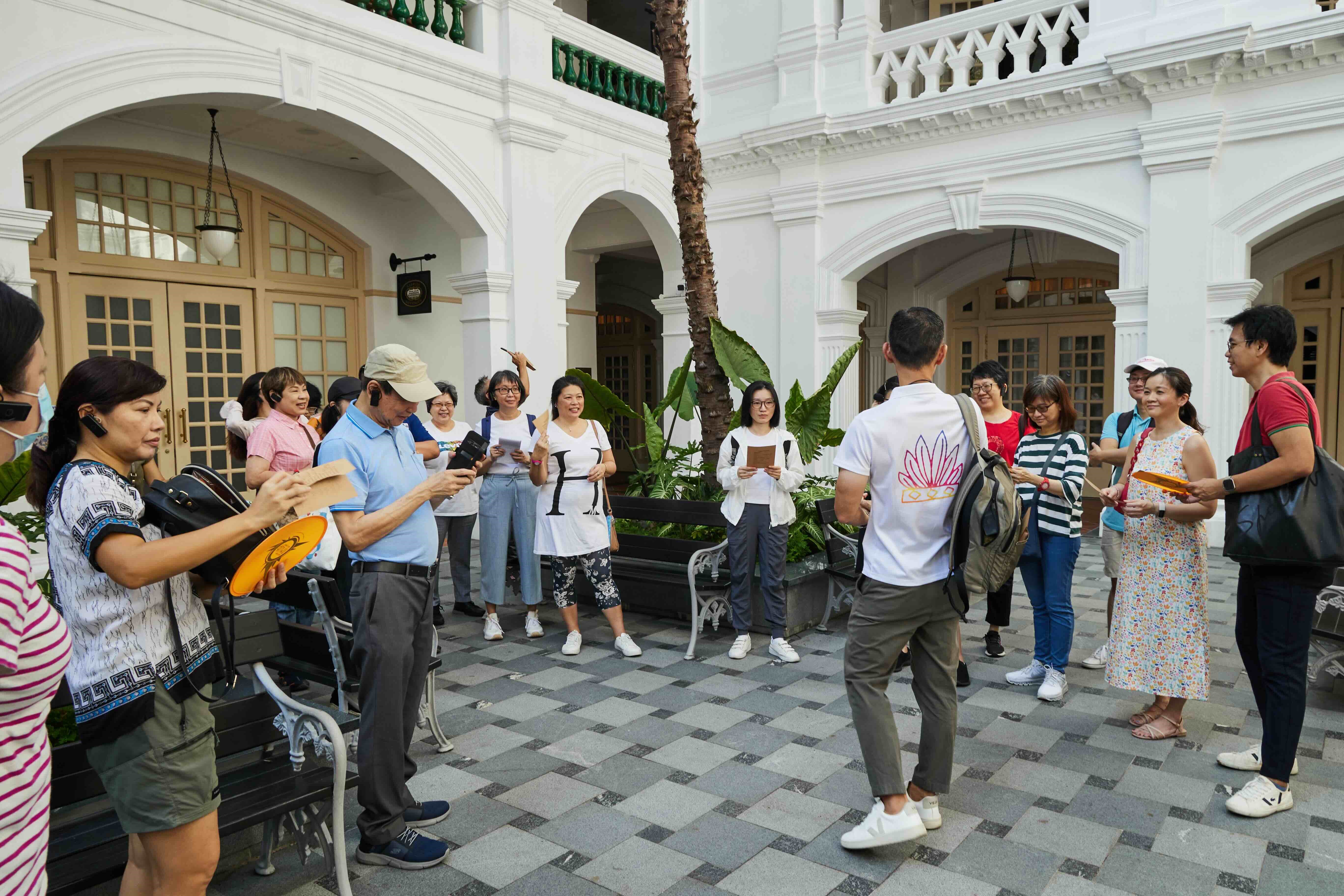
NUS alumni gather at the Raffles Hotel for a walking tour on Hainanese culture in Singapore, organised by NUS Alumni Relations.
Event: Appreciating our Heritage: Hainanese Culture and Food Tour
Date: 31 August 2024
Introduction to Hainanese Immigrants in Singapore
As the tour kicked off at Raffles Hotel, Mr Tan Boon Yick from Tribe Tours provided an overview of the Hainanese community — one of Singapore’s smaller but significant communities — which traces its roots back to China’s Hainan Island. Most Hainanese immigrants arrived in Singapore between the late 19th and early 20th centuries, seeking better economic opportunities.
As the Hainanese were among the last Chinese dialect groups to arrive in Singapore, it limited their access to job opportunities initially held by other dialect groups. They thus carved out niches in professions like cooking and hospitality, famously becoming the backbone of the kopitiam (coffee shop) culture in Singapore.
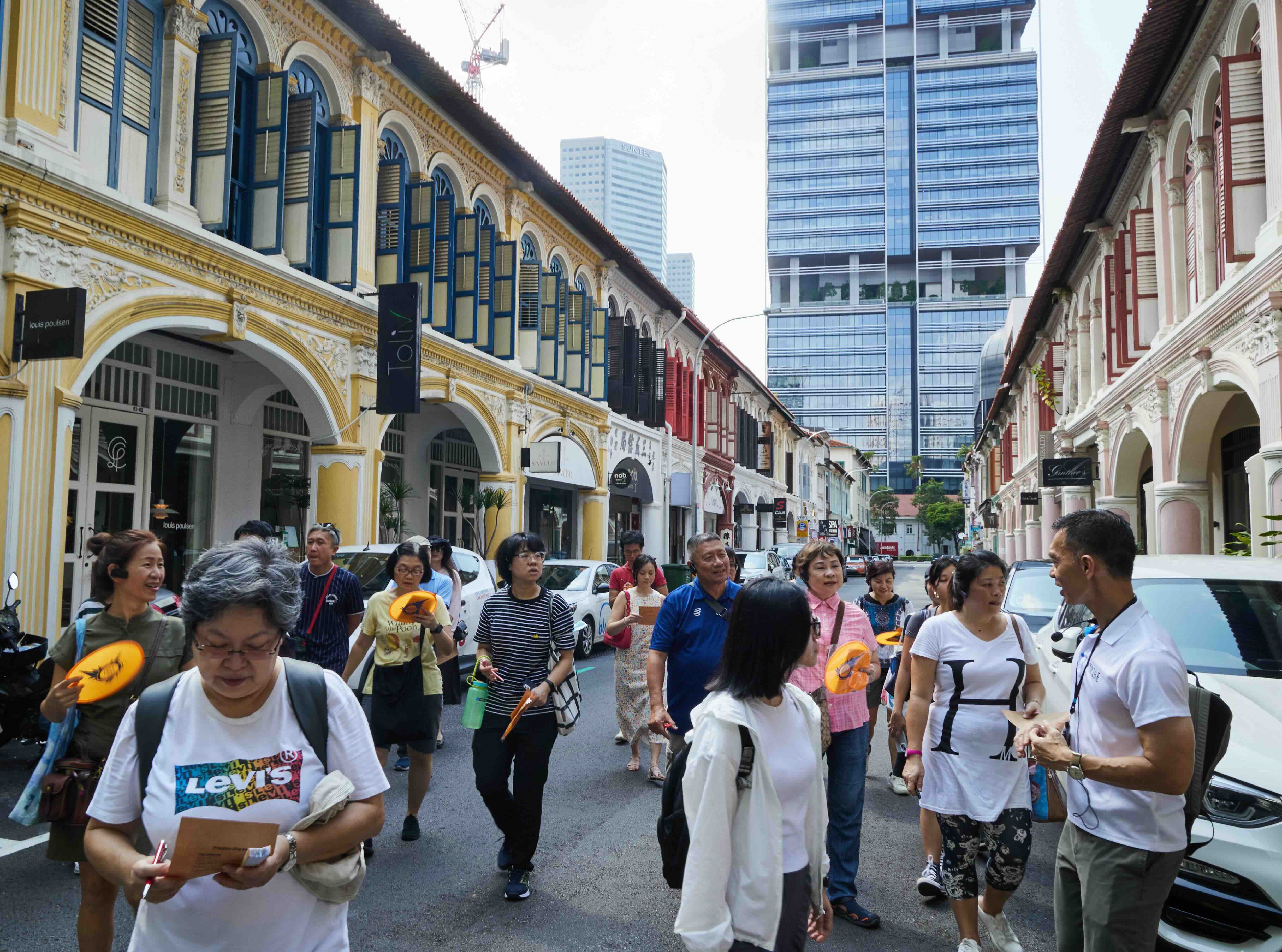
NUS alumni stroll around Seah Street, Purvis Street and Middle Road, once considered the Hainanese enclave of Singapore.
Raffles Hotel
Many Hainanese worked as chefs and housekeepers at Raffles Hotel. The Singapore Sling — the country’s most famous cocktail — was created in 1915 by a Hainanese bartender named Mr Ngiam Tong Boon at Raffles Hotel. At a time when it was frowned upon for women to drink alcohol in public, Mr Ngiam crafted this sweet, pink cocktail to make social drinking more acceptable for women. The Singapore Sling became an instant hit, combining a refreshing mix of gin, cherry brandy and pineapple juice, with a hint of lime and Cointreau. This iconic drink not only captured the spirit of the times but also became a classic symbol of Singapore’s vibrant cocktail culture.
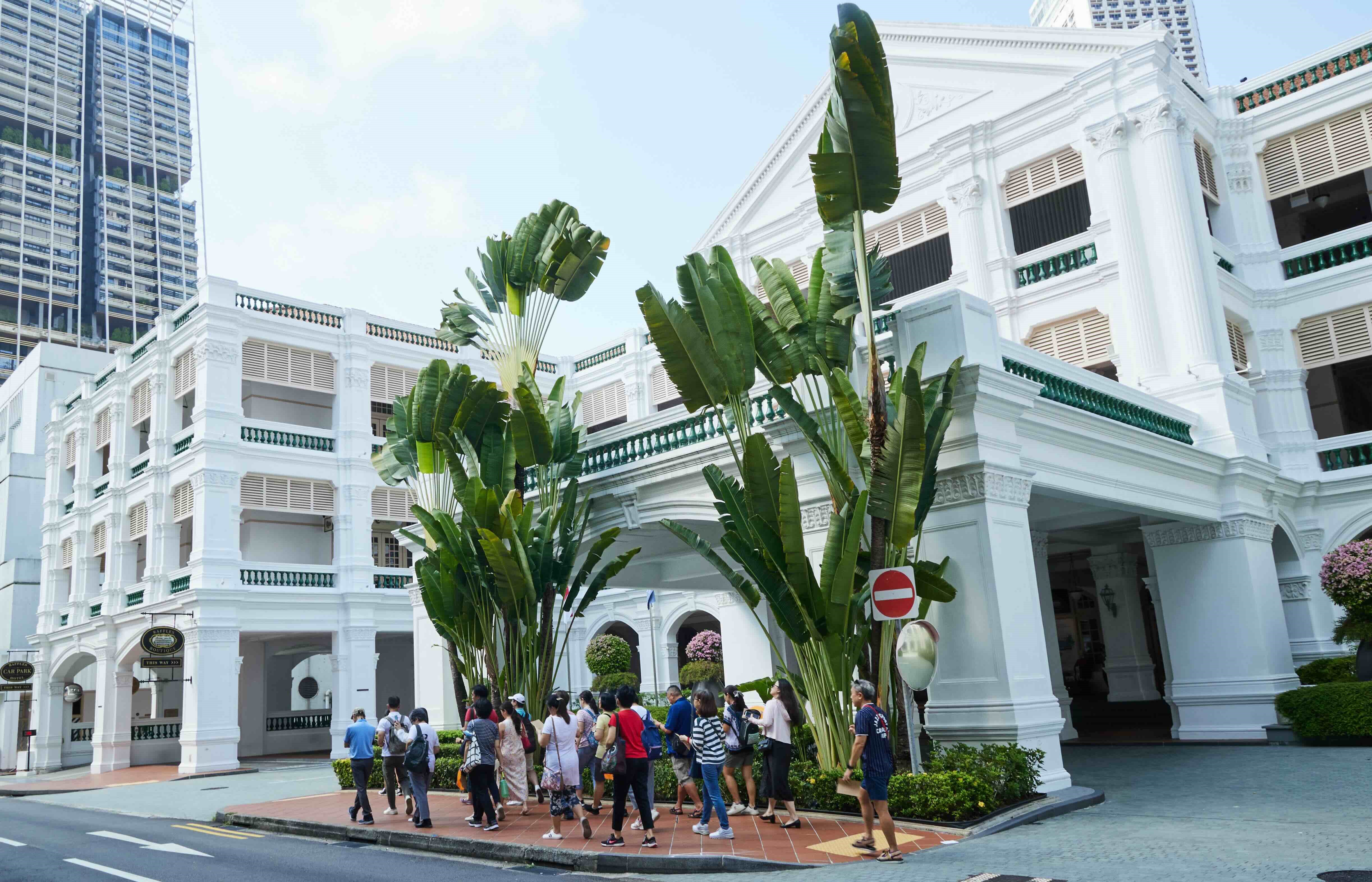
NUS alumni walk past the Raffles Hotel, a historic luxury hotel.
Singapore Sling
• 300 ml gin
• 14 ml cherry brandy liquer
• 7.5ml Dom Bénédictine
• 7.5 ml Cointreau
• 2 dashes Angostura bitters
• 100 ml pineapple juice
• 15 ml lime juice
• 10 ml grenadine
• 4 ice cubes
• Garnish with pineapple and cherry
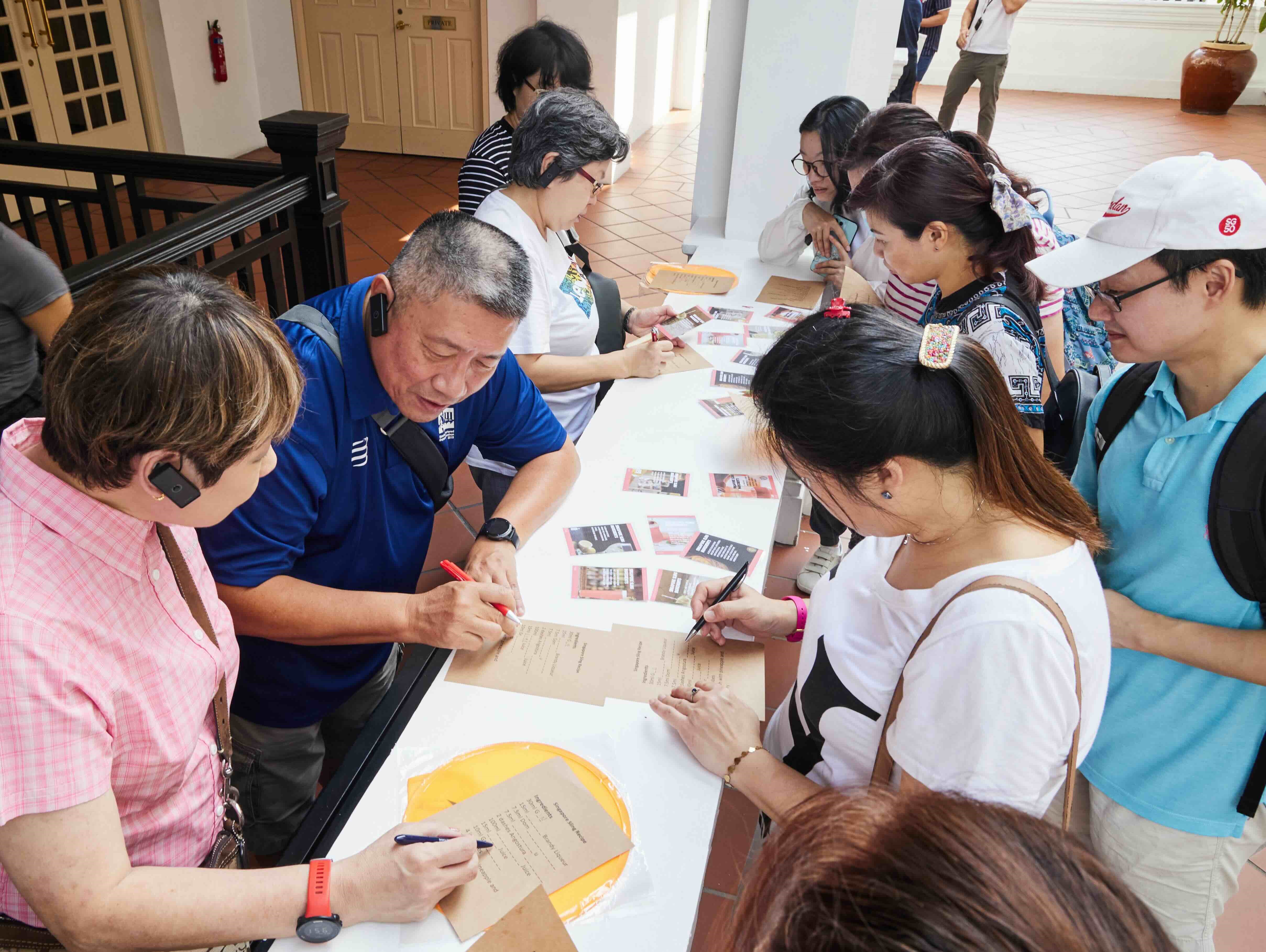
NUS alumni piece together clues to reveal the recipe for a Singapore Sling.
Seah Street
As the group walked along Seah Street, Mr Tan shared an overview of the origins of Hainanese chicken rice in Singapore. Traditionally, this dish was enjoyed at home, but it was a Hainanese man named Mr Wong Yi Guan who first brought it to the streets. Mr Wong would sell his chicken rice using a pole and bamboo basket. To make the rice easier to eat on the go, he even shaped it into convenient rice balls. One of Mr Wong’s disciples later founded the famous Swee Kee chicken rice at Middle Road, a beloved spot that unfortunately closed in 1997.
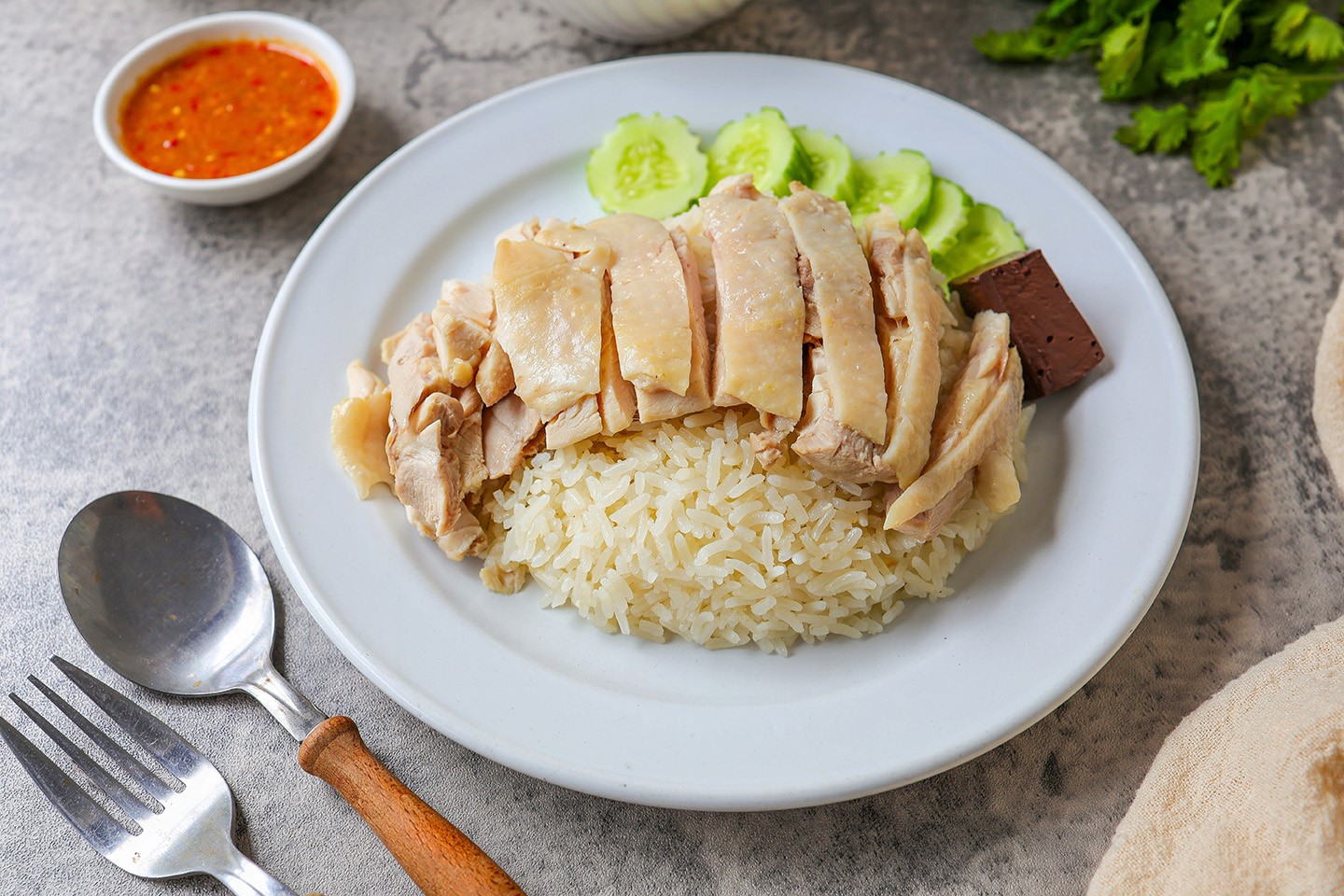 Hainanese chicken rice is commonly referred to as the national dish of Singapore.
Hainanese chicken rice is commonly referred to as the national dish of Singapore.
Singapore Hainan Hwee Kuan
The Hainan Hwee Kuan — one of Singapore’s oldest and most active clan associations — was established in 1854 by clan members from Qiongzhou County in Hainan to support the growing Hainanese community in Singapore. Recognising the importance of education, the clan donated to support the post-war rebuilding of Yock Eng School, which was founded in 1910, and to Pei Chun Public School, founded in 1933.
Beyond education, the Hainan Hwee Kuan also extended its efforts to medical missions, providing healthcare services to those in need. In 2018, the association collaborated with the Singapore General Hospital to organise a medical mission known as ‘Hainan Smile’ to Chengmai County in Hainan to operate on patients with cleft and craniofacial problems. This was the clan's 20th medical mission since the first mission in 2009.
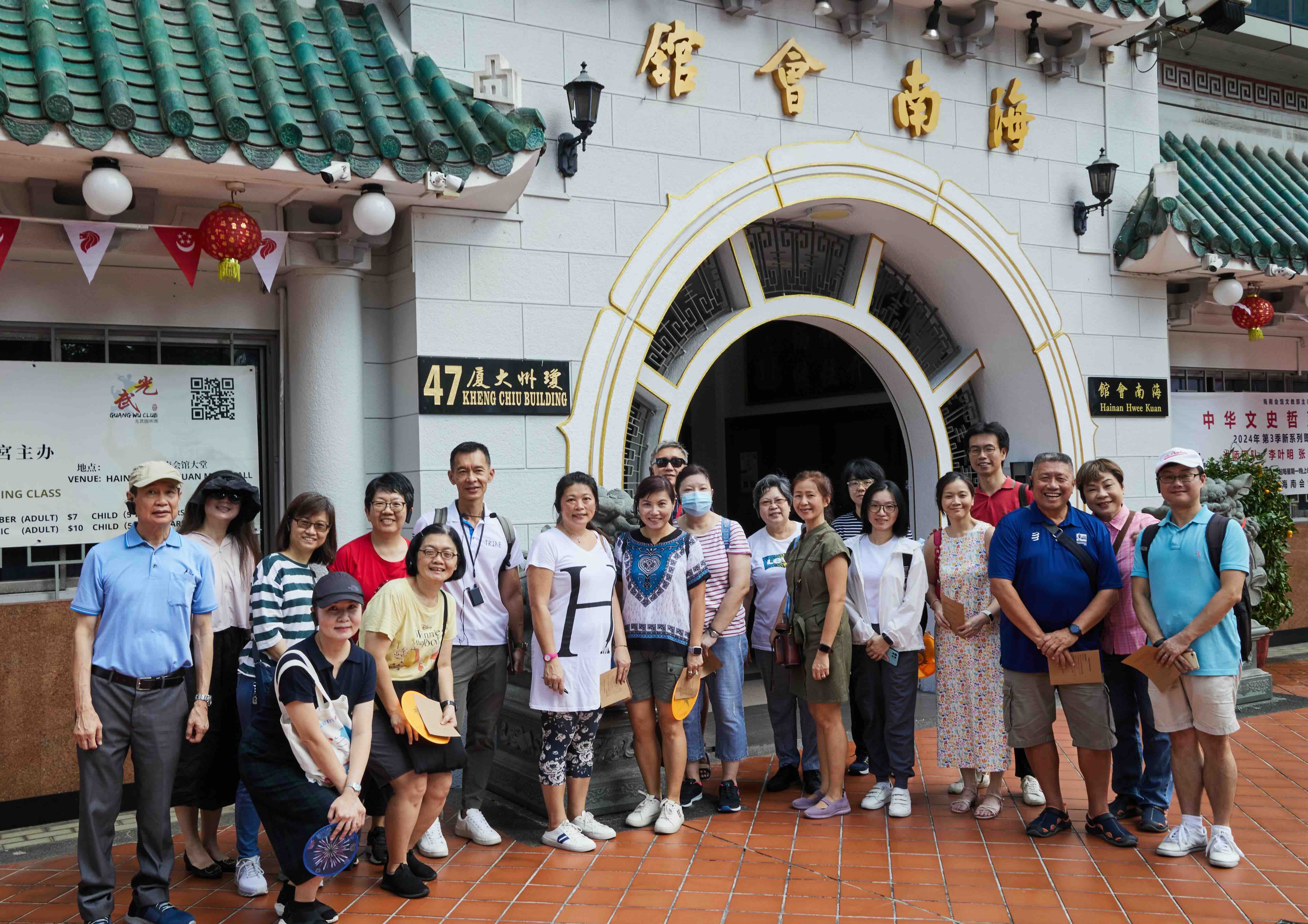
NUS alumni gather outside the Kheng Chiu Building in Beach Road, home of the Hainan Hwee Kuan clan association.
Purvis Street
At Purvis Street, Mr Tan shared some famous Hainanese eateries such as YY Kai Fei Dian, which sells decent Hainanese chicken rice and Chin Chin Eating House, which sells Hainanese dishes such as fried pork chop.
Mr Tan also brought the group to the former site of Nam Tong Lee, a renowned Hainanese confectionery that operated along Purvis Street in the 1920s. Known for its unique Hainanese mooncakes, the shop crafted these treats with a distinct twist — they were inspired by the Shanghainese Su Bing or flaky biscuit. Unlike the traditional sweet mooncakes, Hainanese mooncakes offer a savoury, salt-and-peppery flavour, filled with ingredients like tamarind and melon seeds.
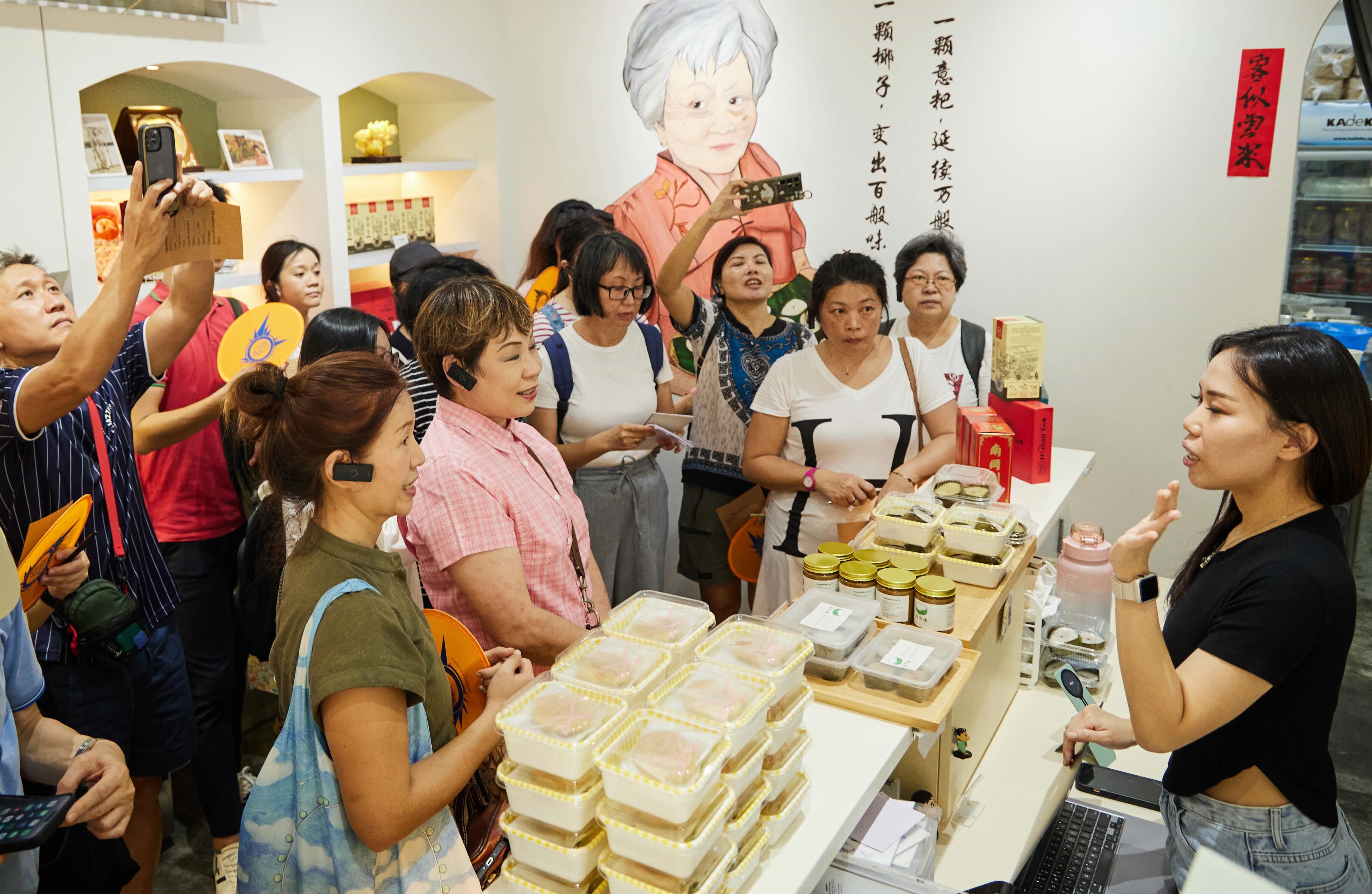
NUS alumni stop by All Things Hainanse to taste their traditional Hainanese delicacies.
Bras Basah Complex
Another delightful stop was at All Things Hainanese, a charming shop dedicated to promoting traditional Hainanese delicacies. Here, participants were introduced to yi bua, a beloved Hainanese glutinous rice kueh filled with grated coconut, peanuts, sesame seeds and the rich sweetness of gula Melaka.
The shop, which also produces its own Hainanese kaya, was founded by the late Madam Yeoh Min Lin. Today, her legacy lives on through her grandchildren — Josephine Loi, Jocelyn Loi, Charmaine Goh and Esmond Goh — who passionately run the business. Jocelyn, Charmaine and Esmond handcraft the kueh in their kitchen, ensuring every bite is a true taste of tradition. Participants were treated to a yi bua and a Nam Tong Lee mooncake, offering a delicious glimpse into the rich culinary heritage of the Hainanese community.
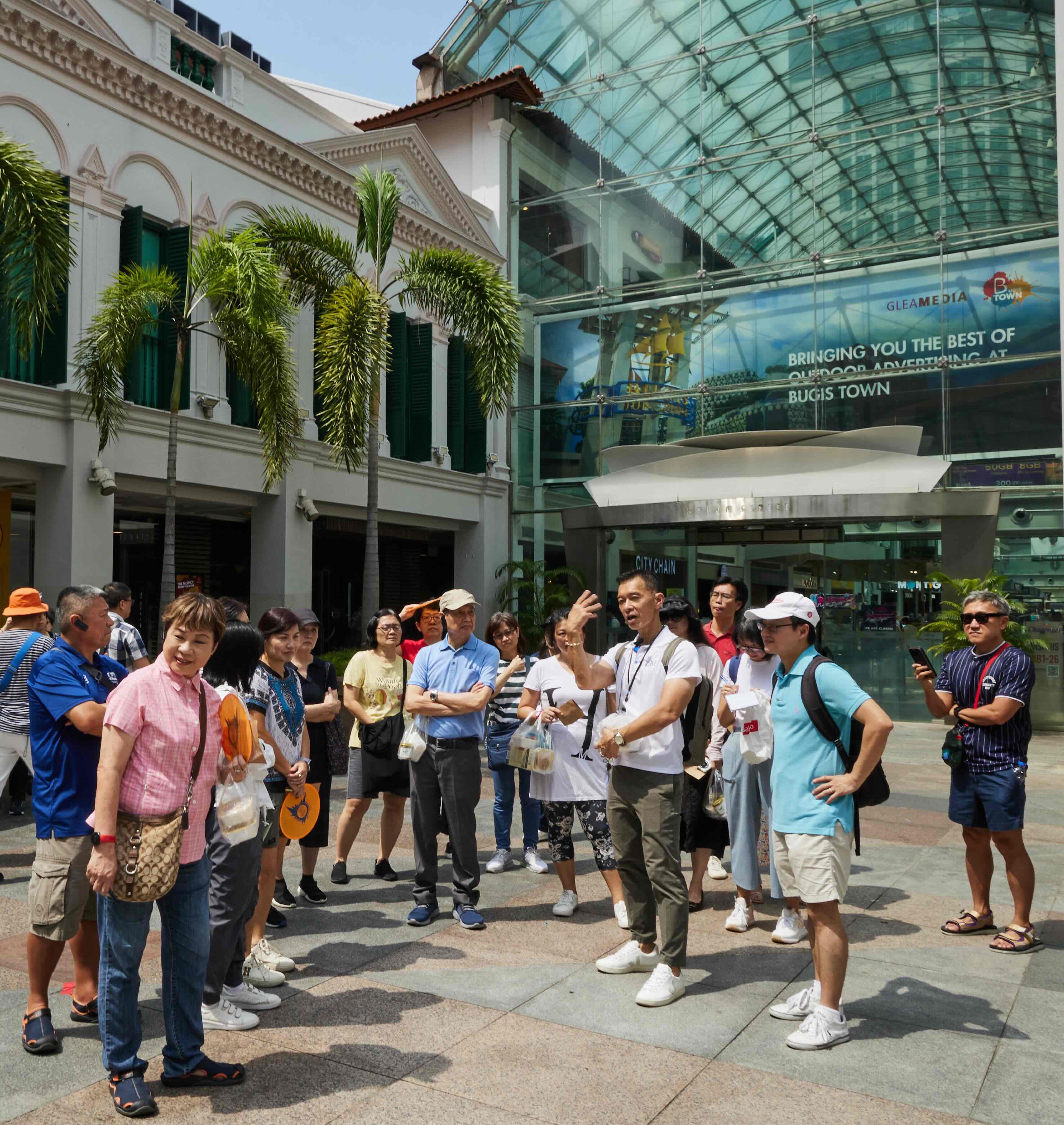
During the walking tour, NUS alumni visit the Bugis area.
Bugis Street
Hylam Street, which once stood adjacent to Bugis Street, was named after the Hainanese community. As overcrowding in Chinatown pushed the Hainanese out, their living quarters extended into the Bugis Street area. This bustling neighbourhood became a vibrant hub for the community. In the 1860s, however, the areas around Malay Street, including Bugis Street, were designated as red-light districts, drawing a different kind of crowd and reputation.
After World War II, especially during the 1950s and 1960s, Bugis Street transformed into a popular tourist spot, attracting British colonial soldiers, seamen on shore leave, and US troops on rest and recreation during the Vietnam War. The street came alive at night with its famous cabaret performances by drag queens, creating an atmosphere that was both lively and unique. Food stalls lining the street added to the allure, making it a favourite haunt for locals as well. However, with the construction of Bugis Junction in 1991, Bugis Street — along with Malay Street, Hylam Street, and Malabar Street — was removed to make way for the modern complex that now includes the InterContinental Singapore hotel and an office block.

Concluding their tour at Café O, NUS alumni enjoy a refreshing beverage while making new friends.
We concluded our enriching tour at Café O, where participants reflected on the day’s experiences over a warm cup of traditional coffee.
For Carol Tan (Engineering ’96, MSc ’98) and her daughter Jacqueline (a current student at NUS), the experience was an opportunity to connect to their Hainanese heritage.
“I am Hainanese so I just wanted to learn a little bit more about Hainanese culture and what is going on in the Hainanese community,” said Carol. “It was quite a big surprise to me that there was a store selling Hainanese snacks; I didn’t know that that existed.”
As we said our goodbyes, it was clear that everyone walked away with a deeper appreciation and understanding of Hainanese heritage, culture and its rich food traditions. The journey through history and flavours not only connected us to the past but also highlighted the enduring legacy of the Hainanese community in Singapore.
Text by Audrina Gan. Photos by Mark Lee.